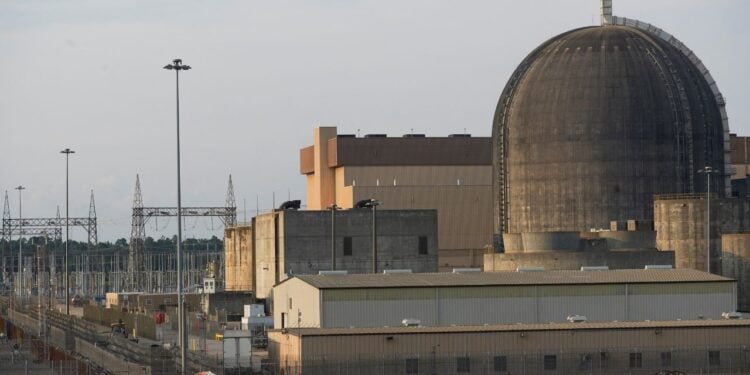The administration of Donald Trump has laid off about 1,200 to 2,000 workers at the Department of Energy, including employees at the nuclear security administration and the loans office, two sources familiar with the matter said on Friday.
Democratic lawmakers also said the layoffs include workers at national labs and hydroelectric plants, and Cold War legacy nuclear sites that pose safety risks. The DOE has about 14,000 federal employees and 95,000 contractors.
The two sources said the layoffs come after three people representing billionaire Elon Musk’s Department of Government Efficiency arrived at the agency.
Some 325 workers have been let go from the department’s National Nuclear Security Administration, which manages the U.S. nuclear weapons fleet and works to secure radiological materials around the world, one of the sources said.
“It’s insane,” the sources said, pointing out the losses at the NNSA occur at a time when nuclear power plants have been at risk in Russia’s war on Ukraine, including Zaporizhzhia, the largest in Europe.
A copy of a letter seen by Reuters and sent to some DOE employees says: “DOE finds that your further employment would not be in the public interest. For this reason, you are being removed from your position with DOE and the federal civil service effective today.”
The DOE press office did not immediately respond to a request for comment.
The source also said 45 workers were let go from the Loan Programs office, which has hundreds of billions of dollars in loan authority for clean energy, nuclear and clean vehicle projects.
In Washington state, at least a dozen workers at the Hanford nuclear site — a 1940s site for plutonium and uranium production for atomic bombs — now decommissioned but highly contaminated — were laid off, including safety engineers who clean up and monitor the site, according to Washington Democratic Senator Patty Murray.
“These reckless firings will slow down critical cleanup work and make workers less safe—trying to run Hanford with a skeleton crew is a recipe for disaster that could have irreversible impacts,” she said. “These layoffs will hurt companies, workers and their families across Eastern Washington.”
Murray said there were layoffs at other DOE-run facilities in the Pacific Northwest, including the Bonneville Power Administration hydroelectric facility and the Pacific Northwest National Laboratory, which carries out research on everything from nuclear energy to battery storage.
Murray’s office reported layoffs of over 600 electricians, scientists, cybersecurity experts at BPA.
The International Energy Agency predicts that data centers’ electricity consumption could exceed 1,000 terawatt hours by 2026, more than doubling from 2022 levels. This sharp increase in energy demand is primarily driven by the electrification of buildings and vehicles, as well as the rising use of AI.
Nuclear energy, which emits virtually no greenhouse gasses, presents a compelling alternative to fossil fuels.
The U.S. government, under the Biden Administration, took steps to support the development of small modular reactor (SMR) technology through funding initiatives stemming from the 2021 bipartisan infrastructure law.
The Department of Energy had planned to distribute up to $900 million to assist the initial domestic deployment of SMR technology. This funding will be allocated in two tiers: one for milestone-based awards and another to address gaps in the domestic nuclear industry, such as design and licensing challenges.
Former U.S. Secretary of Energy Jennifer Granholm had emphasized the importance of revitalizing the nuclear sector, stating, “Revitalizing America’s nuclear sector is key to adding more carbon-free energy to the grid and meeting the needs of our growing economy.”
(Reporting by Emma Ascott, Timothy Gardner; Editing by Marguerita Choy)


 Dr. Gleb Tsipursky – The Office Whisperer
Dr. Gleb Tsipursky – The Office Whisperer Nirit Cohen – WorkFutures
Nirit Cohen – WorkFutures Angela Howard – Culture Expert
Angela Howard – Culture Expert Drew Jones – Design & Innovation
Drew Jones – Design & Innovation Jonathan Price – CRE & Flex Expert
Jonathan Price – CRE & Flex Expert












